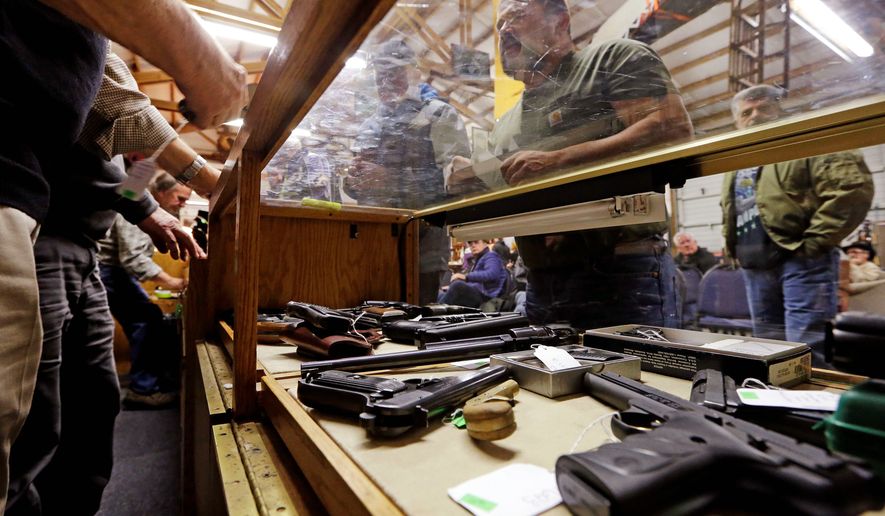The number of federal gun background checks fell 12 percent in February to their lowest level for the month in four years, surprising industry analysts who said the numbers indicate the market hasn’t completely shaken its “Trump slump.”
The FBI ran slightly more than 2 million checks through the National Instant Criminal Background Check System (NICS) last month, compared to more than 2.3 million in February 2018.
“The large year-over-year drop in February 2019 sales, particularly in the long-gun segment, might give the industry some pause,” said Jurgen Brauer, the chief economist at Small Arms Analytics.
One explanation could be that last year’s numbers were particularly high, in the wake of the Valentine’s Day shooting in Parkland, Florida.
Background checks have historically surged in the aftermath of prominent mass shootings, and it could be that a post-Parkland surge has since worn off, said Robert Spitzer, a professor at SUNY Cortland.
“We’ve seen that phenomenon after Sandy Hook and after some other recent mass shootings as well, where gun owners will deliberately go out and buy a gun two weeks after the shooting to make a political statement,” said Mr. Spitzer, who has written extensively on the politics of gun control.
Data suggest there was a “Parkland effect” on sales last year that stretched into March.
Overall, the 2.3 million checks in February 2018 were only 4 percent higher than a year earlier. But there were also close to 700,000 checks run between Feb. 26 and March 4 of last year — the eighth-highest weekly total ever, according to the FBI.
The effect appeared to really take hold last March, when there were 2.77 million checks — up nearly 14 percent from March 2017.
But Mr. Brauer said trying to connect the February decline to factors like the Parkland anniversary or an unexpected increase in January, which is typically a slower month for sales after the holiday rush, would be too speculative.
“In this industry, it’s hazardous to venture much on the basis of a single month of data,” he said in an email. “Buyers had really stocked up quite a bit during the late Obama administration years, so perhaps the so-called Trump slump just continues.”
There were a record 27.5 million NICS checks in 2016 as buyers raced to stock up ahead of the presidential election.
But after Mr. Trump scored an upset victory over Democrat Hillary Clinton, fears of broader new federal gun controls quickly waned.
The checks dropped in 2017 to 25.2 million before ticking back up to 26.1 million last year.
NICS checks aren’t a perfect measure of sales.
The National Shooting Sports Foundation, the leading trade group for the gun industry, does its own calculations using NICS numbers, then subtracting checks that are unlikely to be related to gun sales.
Using that formula, the NSSF said sales for 2018 totaled 13.1 million firearms — down from 14 million a year earlier and well below the Obama-infused peak of 15.7 million in 2016, according to Reuters.
February saw a nearly 13 percent drop compared to 2017, the NSSF said.
Mark Oliva, a spokesman for the group, said he wasn’t quite sure why there was such a dip last month.
Mr. Brauer’s firm does similar calculations, and those numbers showed gun sales declined by about 12 percent last month compared to a year earlier. That included an 18 percent drop for single long gun sales, to about 393,000.
Like Mr. Brauer, Mr. Spitzer said the February numbers could simply reflect lingering effects of the post-2016 Trump slump.
“It seems as though the Trump slump is still the operative baseline economic trend,” he said.
• David Sherfinski can be reached at dsherfinski@washingtontimes.com.




Please read our comment policy before commenting.